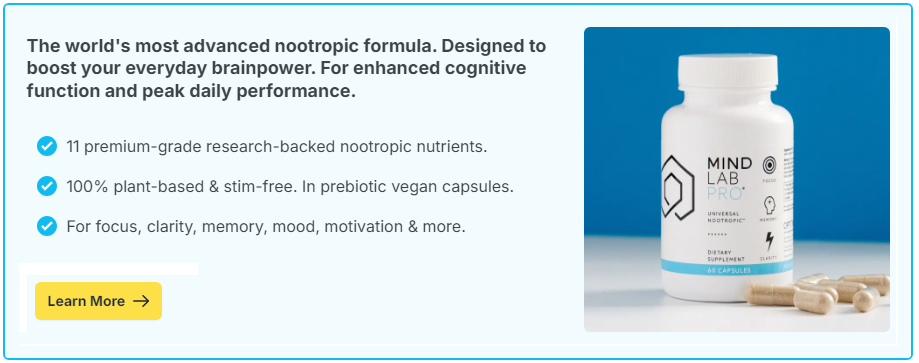
Imagine a world where creativity reaches new heights, where artists can surpass current boundaries through the use of advanced technology and supplements. This potential future is being shaped by exciting developments in artificial intelligence (AI) and nootropics. These innovations promise to amplify the human mind and enhance our natural abilities. But will they really transform us into superhuman artists?
Contents
Understanding Creativity and Its Challenges
Creativity is a fascinating aspect of human cognition, responsible for art, music, scientific discoveries, and more. Yet, tapping into one’s creative potential can be challenging. Many factors impact our creativity, from mental energy and focus to emotional state and environmental influences. Whether you’re a painter struggling with a creative block or a writer searching for that perfect idea, overcoming these obstacles can often feel daunting.
While some people seem to live in a perpetual state of creative flow, others work hard to reach that peak. So, how can we unlock and enhance this ability? This is where advancements in AI and nootropics come into play.
What Are Nootropics?
Nootropics, often referred to as “smart drugs” or cognitive enhancers, are substances that many believe can boost brain performance. They come in various forms, including prescription medications, substances like caffeine, natural herbs, and synthetic compounds. The goal of nootropics is to improve cognitive functions such as memory, creativity, motivation, and attention.
How Nootropics Might Enhance Creativity
- Focus and Attention Enhancement: Many nootropics are designed to improve focus and concentration, which can lead to prolonged periods of creative work without distraction.
- Boosting Mood and Reducing Anxiety: Enhancing mood and lowering stress levels can create a mental environment more conducive to imaginative thinking.
- Memory Improvements: Better memory can help artists draw connections between different ideas, which is crucial for creativity.
While the research on nootropics is still evolving, anecdotal evidence suggests they can be a beneficial tool for many seeking a creative edge.
Artificial Intelligence: The New Muse for Artists
AI has rapidly evolved from algorithms that simply follow instructions to machines capable of learning and creating. Today, AI programs can write poetry, compose symphonies, and even create visual art, prompting us to rethink the boundaries of human creativity.
AI Tools Enhancing Artistic Creativity
- AI-Generated Art: Programs like DeepArt and RunwayML allow users to craft compelling art using AI algorithms that learn from vast databases of images and styles.
- Music and Sound Design: AI can assist musicians in generating original compositions or perfecting existing pieces by suggesting improvements and additions.
- Writing Assistance: Applications such as Grammarly or AI writing assistants can help writers fine-tune their work or even create content based on simple prompts.
AI acts like a collaborative partner, helping artists break away from creative blocks and explore new, unexpected ideas.
The Intersection of AI and Nootropics
Now, imagine combining the cognitive boost from nootropics with the technical prowess of AI. The possibilities for creativity enhancement are staggering. Let’s look at how this combination might transform artistic pursuits:
Enhancing Imagination with AI-Guided Programs
Artists using nootropics may find they have the mental energy to engage more deeply with AI tools, leading to richer and more varied creative outputs. The AI can suggest ideas or provide techniques that the human mind might not reach independently, while nootropics enhance the brain’s ability to explore these ideas.
Creating Tailored Artistic Experiences
AI can help customize learning and creative experiences to fit individual artists’ needs. Coupled with the focused attention and motivation provided by nootropics, personalized AI tools could offer tailored suggestions and inspiration, always evolving as the artist grows.
Striking a Balance Between Technology and Tradition
As artists, researchers, and technology enthusiasts explore the potential of AI and nootropics, it’s crucial to maintain a balance between embracing new technologies and valuing traditional creative processes. While these advancements can offer new tools and techniques, the foundational skills developed through years of practice and exploration remain irreplaceable. They shape the artist’s intuition, emotional connectivity, and unique style—elements that technology can complement but never fully replicate.
The Role of Community in a Tech-Enhanced Artistic Landscape
Community plays a significant role in the evolution of art, and it will continue to do so as AI and nootropics become more prevalent. Artists can share experiences, learn from one another, and collectively navigate the changing landscape. Communities provide support, facilitate collaborations, and spark discussions about the ethical, practical, and creative implications of using these technologies. As artists increasingly integrate AI and nootropics into their work, community spaces—whether virtual or physical—will act as vital hubs for knowledge exchange and artistic growth.
Ethical Considerations and Future Implications
With these advancements, we must also consider ethical questions. For instance, if AI can create art, who truly owns it? With enhanced cognitive functions, will artists face pressure to outperform others, leading to an unhealthy competitive environment?
Questions about accessibility arise too. Would enhanced creative abilities be distributed equally, or only available to those who can afford them? We must think about inclusivity and fairness as part of the innovation conversation.
And importantly, we need to understand the long-term effects of nootropics and heavily relying on AI for creative processes. Ongoing research and a careful consideration of risks versus rewards are crucial.
Looking Toward a New Era of Artistry
As we look to the future, the potential of AI and nootropics in art is both thrilling and filled with complexity. These tools offer remarkable possibilities, enabling humans to push the boundaries of creativity. But, like any tools, they require careful use and consideration.
The dream of becoming superhuman artists might not be too distant, but it will be important to retain the core human qualities that make art so special: emotion, empathy, and the unique perspectives each individual can offer. As we navigate this exciting frontier, balance and mindfulness will guide us toward a creative future that’s innovative and inclusive.

